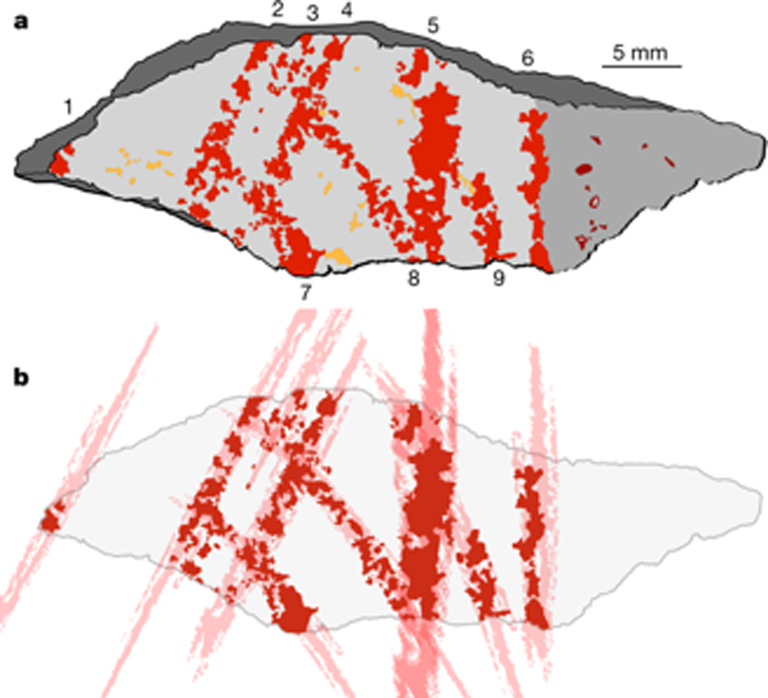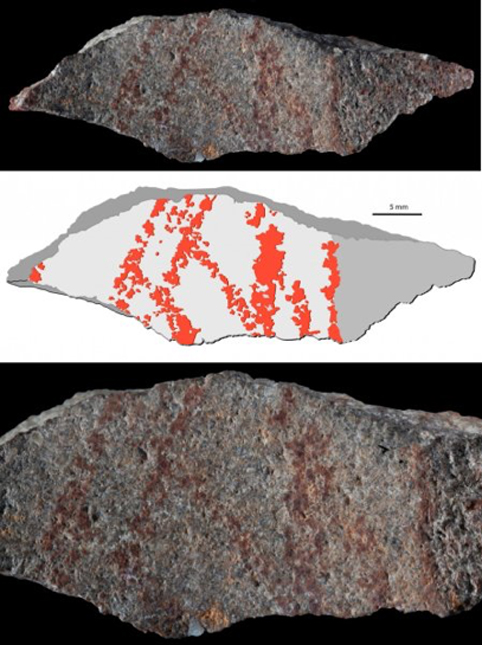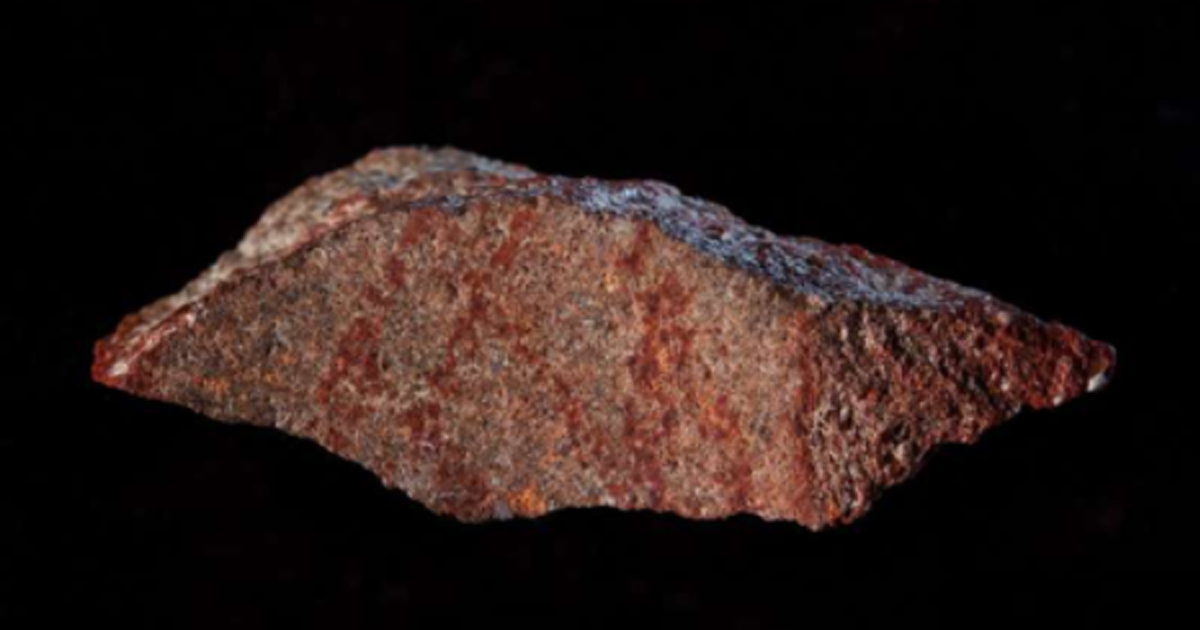Discovery of the Earliest Drawing – By at Least 30,000 years
What is a symbol? This is a tough question to answer when tasked with analyzing the earliest graphic productions. What we might today interpret as figurative representations might just be an ancient doodle that had no special purpose. For a long time, archaeologists were convinced the first symbols appeared when Homo sapiens colonized areas of Europe about 40,000 years ago. However, recent archaeological discoveries in Africa, Europe, and Asia suggest the creation and use of symbols emerged much earlier.
For example, the oldest known engraving is a zigzag carved into the shell of a freshwater mussel found in Trinil (Java) within 540,000-year-old archaeological strata. And objects for personal adornment have been unearthed at several archaeological sites in Africa dating back to 70,000 to 120,000 years before the present.

540,000-year-old clam shell found in Java with zigzag scratching on. (CC BY-SA 4.0)
In the new article, the international team that includes scientists from the PACEA (CNRS / University of Bordeaux / French Ministry of Culture) and TRACES (CNRS / University of Toulouse-Jean Jaurès / French Ministry of Culture) research units describe the oldest known abstract drawing made with a piece of ocher used as a pencil. It was identified on the surface of a small piece of siliceous rock (silcrete) while analyzing stone tools collected during an excavation at Blombos Cave in South Africa.
The silcrete fragment came from a 73,000-year-old archaeological stratum and bears a crosshatched pattern made up of nine fine lines.
- An 8,000-year-old Slab Holds the “Oldest Writing” Ever Discovered! Or Does It?
- 7,000-Year-Old Ceramic Fragment with Signs, Symbols and Swastika May Be One of the Oldest Examples of Writing
- Laas Geel Complex and The Magnificent Ancient Rock Art of Somalia

The silcrete flake displays a drawing made up of nine lines traced on one of its faces with an ocher implement. (Image: D'Errico/Henshilwood/Nature)
A major methodological challenge was to prove these lines were deliberately drawn by humans. It was primarily tackled by the team's French members, experts in these matters and specialized in the chemical analysis of pigments. First they reproduced the same lines using various techniques: They tried fragments of ocher with a point or an edge and also applied different aqueous dilutions of ocher powder using brushes. Using techniques of microscopic, chemical, and tribological analysis (tribology is the science of friction and wear), they then compared their drawings to the ancient original. Their findings confirm the lines were intentionally drawn with a pointed ocher implement on a surface first smoothed by rubbing. The pattern thus constitutes the earliest known drawing, preceding the oldest previously discovered works by at least 30,000 years.
- Is the Danube Valley Civilization script the oldest writing in the world?
- New Research May Establish Australian Rock Art as the Oldest in the World
- Did Humans Speak Through Cave Art? Ancient Drawings and Language's Origins

Testing proved the ochre lines were intentionally drawn. (Image: D'Errico/Henshilwood/Nature)
The archaeological stratum in which the silcrete flake lay had already yielded many other objects with symbolic markings, including ocher fragments that feature very similar crosshatched engraving. These finds demonstrate that the first Homo sapiens in this region of Africa used different techniques to produce similar signs on different materials, which supports the hypothesis that these markings served a symbolic function.

A similar pattern was engraved on this piece of ocher found at Blombos Cave in the same archaeological stratum that yielded the silcrete flake. (Image: D'Errico/Henshilwood/Nature)
Top image: A Blombos Cave with ochre pencil on silcrete stone thought to be the earliest drawing. Source: Craig Foster
The article, originally titled ‘Discovery of the earliest drawing,’ was first published on Science Daily.
Source: CNRS. "Discovery of the earliest drawing." ScienceDaily. ScienceDaily, 12 September 2018. www.sciencedaily.com/releases/2018/09/180912133531.htm
References
Christopher S. Henshilwood, Francesco d’Errico, Karen L. van Niekerk, Laure Dayet, Alain Queffelec, Luca Pollarolo. An abstract drawing from the 73,000-year-old levels at Blombos Cave, South Africa. Nature, 2018; DOI: 10.1038/s41586-018-0514-3




















Comments
Once again people are trying to make a few marks on a pebble into "ART".. the pebble is so small and there appear to be no other marked pebbles so the story is pure conjecture. Find a series or a complete design and there might be something, otherwise it's just fantasizing. Could have been somebody sharpening a ocher crayon ... It's all baseless assumption.